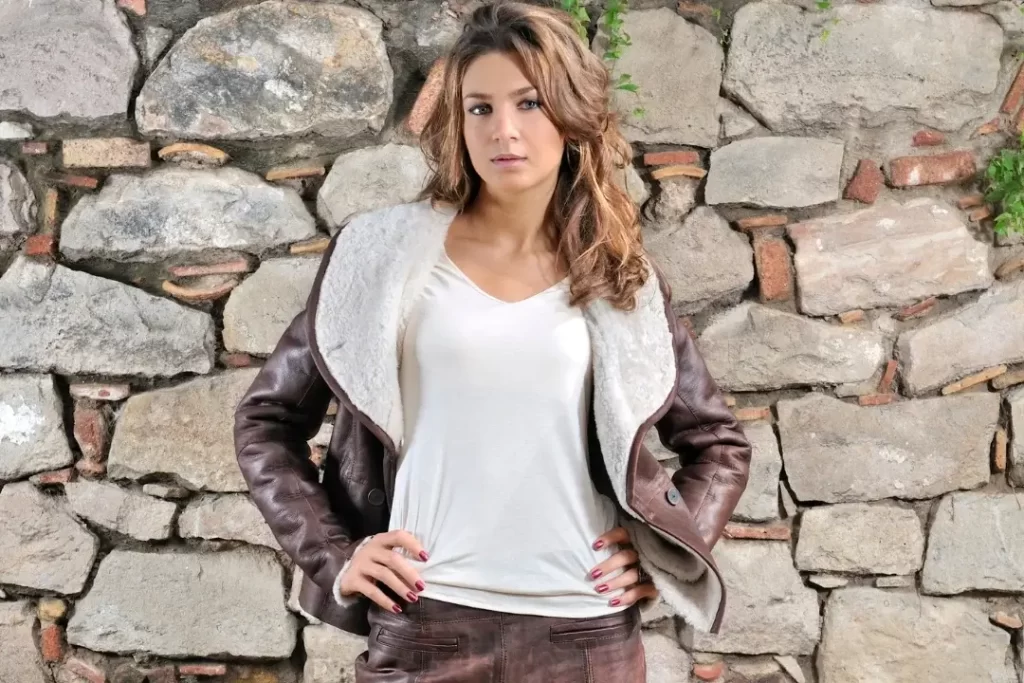
Why Clothing Brands Fail
Top Different Types of Shirts for Women and Men Top Different Types of Shirts for
It’s a beautiful day! You’re at the store looking elsewhere when something breathtaking unexpectedly captures your attention. A stylish, finely sewn, genuine leather bag, labeled with the seller’s assurance of its premium quality. But wait! Have you ever wondered about the secrets dwelling in the depths of that tag ‘premium genuine leather’? Or why do some leather types cost lesser or more than others? So that’s why in this blog we will walk you creatively through different types of leather, aiming to solve your labyrinth about leather types and all related prospects. So let’s reveal the hidden truths!
Leather is a naturally occurring, durable material made from animal hides, skins, and rawhides. It undergoes numerous processing stages involving tanning, dyeing, and drying to gain its distinctive characteristics, strength, flexibility, and resilience.

Leather’s chronicles pace parallel to human civilization, tracked back as far as 5000 BC where it was utilized for clothing, shelter, and warfare. Over millennia, the skill of making leather evolved, marking valuable contributions to ancient civilizations. Interestingly, its inventorial paradox never ceased till even this day, conquering the fashion industry, luxury furniture, and more in today’s time.
The process of making leather is both an art and a science, attributing its crafting with elegance and precision. It typically involves four fundamental steps:
The rawhide is appropriately cleaned and prepared by removing hair and excess organic material. Most commonly, soaking in a limewater solution is done, leaving it ready for the next stage.

As one of the best type of leather, it carries the purest form of whole hide eminent for its durability and characteristics. It holds intact the original markings, hair cells, uneven tones, and other natural attributes normally adorned by the animal skin, showcasing the leather in its most natural, raw, and authentic form.
Full-grain leather is wonderfully rugged, hardy, and long-lasting. However, it is prone to showing scuffs and scratches that are part and parcel of its everyday life. It also requires regular maintenance to keep it in great condition and is distinctly more expensive than more processed leather.
Known for its superb toughness and breathing properties, Full grain leather is a prime pick for products of daily rigors – be it classy footwear, robust handbags, some highly poised furniture, and epic vintage jackets.
Full grain leather can be sourced from the finest tanneries located globally, abundant along regions served by the livestock sectors with references from Europe, America, and Australia taking the lead.
This variant of leather is, as its label dictates, from the topmost layer. This “high cut” makes it thinner and more flexible than its full-grain counterpart. Nevertheless, it also means there are more avenues of processing involved, translating to its subtle uniform appearance free of uncustomary markings.
Top-grain leather is refined and sleek. It bears high resistance against stains. However, it’s not as durable as full-grain leather and doesn’t develop an attractive patina over time. Additionally, breathability could take a hit due to its processed nature.
Top grain leather’s cosmetic friendliness gifts it a reputable ground in realms such as high end apparel, footwear, luxury bags, and upholstery turnaround, framing universal first choice amongst elegant and chic communities.
You could negotiate top-notch quality Top Grain twirled stockholders the world over with plethoric veteran markers exhibiting at fashion weeks, leather fairs, or best at home, ordering from leading online Marketplaces.
Known as the most accessible and affordable type of leather, genuine leather is primarily made from leftover hide once the upper layers have been removed for making higher-grade leather. It is usually covered with a topical layer of laminates or treatments for preserving it and also to provide a more visually enticing appearance.
Genuine leather exhibits medium durability and versatile surface treatments, defying a delightfully affordable entrée to leather novices. The flip side prevails as it lacks the solidity of the higher grades and might not age as gorgeously due to overwritten natural acclaims with superficial veneer layering techniques.
Genuine Leather finds a strong place in the market within truly diverse commodify sectors, ranging from budget-friendly handbags, belts, wallets, and day-to-day accessories playing a vigorous field in gift industries striking deals within many competitive entry-level designer offerings also.
Global retail markets are perpetually flooded with quality economical inventory boasting ‘genuine leather’. Online retailers, factory outlets, mainstream department stores, and small-town leather boutiques engage in a fairly sustainable trade indulging its business virility.
Bonded leather spares not even the leftovers! Broadly seen as the least ‘authentic’, this hybrid category brilliantly pieces together leather scraps “bonded” with adhesives and reshaped to form homogeneous new sheets resembling leather. If you want to learn more about bonded leather click here.
Bonded leather is undeniably affordable and can mimic the aesthetics of higher-grade leathers superficially fairly. In advanced formulation upgradations, durable variants are indeed market competitive, sewing value closer to conventional grains. Contrarily, drawbacks reflect in its weakened nature count, prone to wear and tear early, and an unpreferential aged performance. Not the best choice if longevity is a high-priority trait.
Bonded leather shines in affordability versus functionality battles, nestling itself nicely in fashion accessories, covers, book bindings, wallets, handbags, office accessories, and more. It’s also employed intelligently in select furniture finishing details to attain a lux leather charm optimally over budget considerations.
Known for the highest probability of product graders flooding extensive markets with huge value bargains makes Bonded Leather is easily available in every extensive online market or a nearby mainstream store to leather specialty shops framing values under gracious price game.
In this insightful blog on types of leather, we unleashed the world of leather, its types, processing procedures, uses, and inherent values. By understanding the implications of choosing the right type of leather, how to care for each, and where to buy, we decidedly accentuate your shopping experience and lifetime reach of value expectations. Hence, worth repeating, every leather grade brings with it innate features and abilities that make it as versatile as its true calling! So whether we choose full grain leather for a personalized classic experience, select top grade overlooking elegance, scoot for ease at bonded leather’s affordability, or miss pass on genuine man build for quick upkeep, every choice presents uniqueness knitted tightly and intact with our discerning Leather Fables!
Full-grain leather is regarded as the most durable type commanding superior quality. This is primarily owing to the intact hide’s blueprint for preserving and maximizing the entirety of original animal skin fibers
Full grain boasts maximum thickness and durability owing to its untouched natural hide art, whereas top grain, glossed after subtle surface buffing and refinements flourishes uniform appearances more, without broadcasting inherent uneven ages of original skins.
Yes, higher-grade leathers, such as full top grain, are more expensive.
Expert Custom Clothing Manufcaturer

Top Different Types of Shirts for Women and Men Top Different Types of Shirts for

What You Must Know About Clothing Samples? Before You Produce a Single Garment: What You

How Much Does It Cost To Make a Hoodie A Complete Cost Breakdown for Custom

Discover the Types of Buttons Discover the Types of Buttons That Transform Style and Functionality
Most Recent Posts
Expert Custom Clothing Manufcaturer
Join our Mailing list!
Get all latest news, exclusive deals and updates.